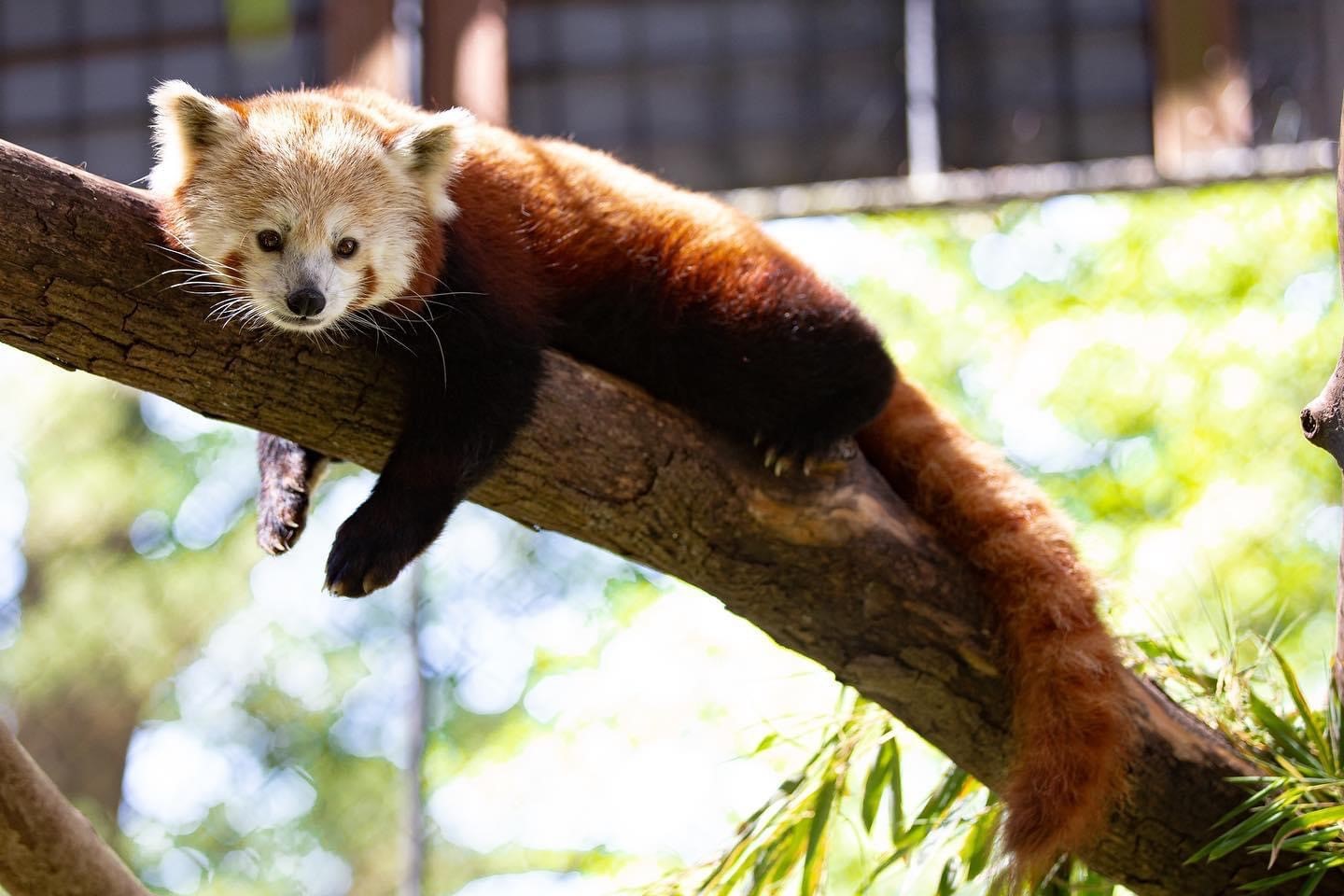- Understanding Red Panda Behavior in Cold Climates
- The Role of Zoos in Wildlife Conservation and Education
- How Brandywine Zoo Creates a Suitable Habitat for Red Pandas
- The Importance of Cold Weather Alerts for Zoo Animals
- Encouraging Public Engagement Through Winter Zoo Visits
Red pandas are captivating creatures, fondly known for their striking red coats and bushy tails. These docile animals, native to the eastern Himalayas and southwestern China, thrive in chilly mountain climates. Understanding their behavioral adaptability to extreme temperatures is crucial for their care in captivity. In the wild, red pandas live in temperate forests at altitudes ranging from 4,900 to 13,000 feet, where temperatures can drop significantly. Their thick fur acts as insulation, protecting them against cold conditions, while their tails serve as blankets to cover their faces as they sleep. During winter, they exhibit behaviors similar to a state of torpor, reducing metabolic rates to conserve energy.
The Brandywine Zoo’s Red Panda Weather Alert highlights these animals’ love for cold weather. When temperatures plummet, red pandas become more active, showcasing their natural behaviors, providing an educational display of adaptation. Observing red pandas during such conditions offers unique insights into their lives, elucidating their role within the ecosystem and how they coexist with other cold-climate species.
Zoos play a crucial role in wildlife conservation, serving as educational hubs that provide visitors a unique opportunity to engage with species they might not encounter otherwise. By showcasing animals like red pandas, zoos raise awareness about habitat preservation and the importance of biodiversity. They serve as sanctuaries for endangered species, contributing to global conservation efforts through breeding programs and habitat simulations.
The Brandywine Zoo exemplifies this mission by offering free winter admission, encouraging the public to learn about wildlife and conservation issues. By doing so, the zoo fosters a deeper connection between people and nature, inspiring future conservationists. Such initiatives emphasize the role of zoos beyond leisure facilities, presenting them as vital educational resources that help preserve our planet’s wildlife.
Creating a suitable habitat for red pandas at the Brandywine Zoo involves replicating their natural environment to the greatest extent possible, a challenging yet achievable task facilitated by modern zoo management practices. Red pandas need a habitat with temperature control, climbing structures, and dense vegetation, mimicking their native forest homes. Regular enrichment activities are also provided to stimulate their physical and mental well-being, ensuring they remain active and healthy throughout the season.
The zoo’s dedicated staff includes veterinarians, animal behaviorists, and conservationists who work collaboratively to monitor and maintain optimal conditions for the red pandas. These efforts ensure the animals are not only physically comfortable but also psychologically enriched. The planning that goes into replicating a cold, mountainous environment in a zoo in a different climatic zone is a testament to the commitment of the staff to the welfare of the animals.
In addition to habitat simulation, cold weather alerts at zoos play an important role in animal care. These alerts guide zookeepers in adjusting animal care routines, particularly for species adapted to different climates. While red pandas enjoy the cold, other zoo animals may require additional heating or shelter to cope with freezing temperatures. Weather alerts allow zoos to proactively manage such needs, ensuring the well-being of all inhabitants, regardless of their natural environment.
Through these alerts and the information they provide, zoos can educate the public on the diverse needs of animals and the intricacies of replicating complex habitats. This understanding fosters greater appreciation among visitors regarding the challenges of maintaining exotic species in captivity, reinforcing the critical nature of conservation and animal welfare efforts.
By promoting visits during the winter season, the Brandywine Zoo not only educates visitors about cold-loving animals but also encourages public engagement through interactive experiences and educational programs. Visitors have the chance to observe red pandas in their most active state, offering a rewarding experience that differs from summer observations. These interactions are invaluable for inspiring interest in conservation, motivating people to take an active role in preserving wildlife.
Winter zoo visits present an opportunity to connect with nature in a serene setting, free from the typical summer crowds, which allows for a more intimate experience. As the Brandywine Zoo extends an invitation to explore its grounds freely, the Red Panda Weather Alert serves as a reminder of the wonders of the natural world and the joy that comes with understanding and protecting it. This initiative not only provides a delightful winter activity but also augments the zoo’s educational outreach, promoting awareness and action for wildlife conservation.
*****
Source Description
🐾❄️ Red Panda Weather Alert! ❄️🐾
Did you know that Red Pandas LOVE the cold? 🐾❄️ That’s right—our red pandas at the Brandywine Zoo are thriving in this chilly weather, and now is the perfect time to visit! 🌬️🐼
Even better? The Zoo is FREE all winter long! 🎉 So bundle up, grab a hot drink, and come see these fluffy, cold-loving cuties in action. Don’t miss out on this winter wonderland experience!


